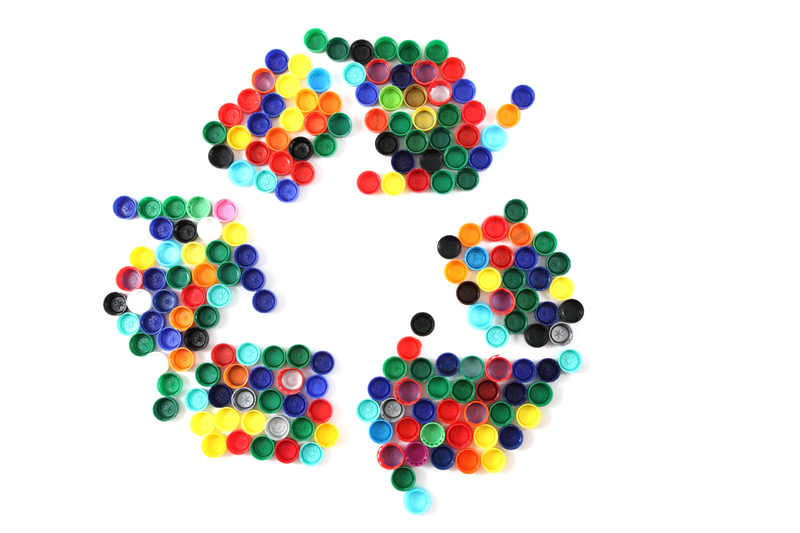Safeguarding Public Spaces by Disposing of PPE Waste Properly
The recent global health crisis has transformed the way we live, work, and interact with each other. One significant change is the widespread use of Personal Protective Equipment (PPE) such as masks, gloves, and face shields. While PPE has been essential in minimizing the spread of infectious diseases, improper disposal of these items has led to increasing concerns about environmental pollution and public health. This comprehensive article explores the importance of safeguarding public areas through the proper disposal of PPE waste and offers practical solutions and actionable steps to ensure cleaner, safer communities.

Understanding the Importance of Proper PPE Waste Disposal
PPE disposal isn't only a matter of cleanliness; it's closely tied to protecting community health and preserving the environment. When PPE like masks and gloves are discarded improperly in streets, parks, and other communal areas, they not only create unsightly litter but can also become vectors for disease transmission and environmental contaminants.
Why Proper PPE Waste Management Matters
- Prevents Disease Spread: Used masks and gloves may carry harmful pathogens. Proper disposal reduces the risk of community transmission.
- Protects Wildlife and the Environment: PPE items made from plastics and synthetic fibers can persist in nature for years, posing threats to animals and marine life.
- Maintains Public Space Aesthetics: Clean parks, sidewalks, and transportation hubs are more inviting and safe for everyone.
- Supports Waste Management Systems: Responsible disposal reduces strain on waste processing facilities and prevents blockages in urban drainage systems.
Types of PPE Waste and Their Environmental Impact
Common PPE Items Found in Public Spaces
- Disposable masks (surgical and N95)
- Plastic face shields
- Single-use gloves (latex, nitrile, or plastic)
- PPE packaging like plastic wrappers and boxes
Most PPE is made from materials such as polypropylene, a type of plastic that does not biodegrade quickly. When these items make their way into urban landscapes, waterways, or natural reserves, they contribute to:
- Microplastic Pollution: Breakdown of masks and gloves releases microplastics that infiltrate soil and water systems.
- Wildlife Hazards: Animals may ingest PPE or become entangled, leading to injury or death.
- Visual Pollution: Accumulation of PPE waste in cities and parks diminishes the quality of life and promotes careless littering behavior.
Challenges in PPE Waste Disposal in Public Spaces
Common Disposal Mistakes
- Littering in Open Spaces: Throwing masks and gloves on streets, sidewalks, and lawns instead of using designated bins.
- Improper Waste Segregation: Disposing of contaminated PPE with regular recyclables, causing cross-contamination.
- Overflowing Public Bins: Insufficient waste collection leading to PPE items spilling out of trash cans.
These practices not only undermine efforts to protect public spaces but also expose sanitation workers and the public to unnecessary risks.
Barriers to Effective Disposal
- Lack of awareness about how to properly dispose of PPE waste.
- Insufficient infrastructure for PPE-specific waste collection, especially in high-traffic areas.
- Ambiguity in guidelines from local authorities regarding PPE disposal.
Best Practices for PPE Waste Disposal in Public Areas
Proper handling and disposal of PPE in communal places requires a collaborative approach involving individuals, businesses, and government agencies. The following strategies can help minimize the impact of PPE litter and strengthen community health defenses.
Individual Responsibility in PPE Disposal
- Carry a disposable bag: If you need to remove used PPE while outdoors, store it safely in a separate bag until you can locate a designated bin.
- Locate dedicated PPE disposal bins: Many cities have installed special containers for collecting PPE. Use these whenever available.
- Never flush PPE items: Flushing masks or gloves down the toilet can clog sewage systems and contaminate water sources.
- Double-bagging: For visibly contaminated PPE (from sick individuals), double-bag before disposal to minimize infection risks.
Public and Private Sector Involvement
- Install more PPE-specific bins: Governments and facility managers should provide easy-to-identify PPE waste bins, especially at entrances/exits and high-traffic locations.
- Regular waste collection schedules: Increase collection frequency to prevent bin overflow and spillage.
- Clear signage and instructions: Use multilingual and visual signs to educate people on the proper disposal of PPE.
- Partnerships with recycling companies: Explore collaborations for the responsible recycling of certain PPE materials where feasible.
Innovative PPE Waste Management Approaches
- PPE Recycling Initiatives: Some startups and environmental groups have developed processes to recycle used PPE into fuel, construction materials, or even new plastic products.
- Community cleanup drives: Organize PPE-focused waste collection events to keep neighborhoods and parks free from litter.
- Incentive-based programs: Encourage responsible disposal by rewarding individuals or groups for collecting and properly disposing of PPE waste.
The Role of Public Awareness and Education
A critical element in safeguarding public spaces by disposing of PPE waste properly is public education. Increased awareness leads to behavioral changes crucial for community-wide engagement.
Key Public Awareness Tactics
- Media campaigns: Utilize social media, local news outlets, and public service announcements to highlight the need for proper PPE waste management.
- School programs: Teach students about environmental stewardship and the proper way to handle PPE waste, instilling lifelong habits.
- Community workshops: Host educational workshops and distribute flyers to local businesses, religious centers, and residential complexes.
- Health authority endorsement: Endorsements from trusted public health officials can help dispel myths about PPE disposal and reinforce best practices.
Legal Frameworks and Regulations on PPE Waste Management
Existing Guidelines
Many countries have introduced specific guidelines on the disposal of PPE waste in public areas. Often, these include:
- Classifying used PPE as medical or hazardous waste, especially if generated in medical facilities.
- Mandating separate collection containers for PPE disposed of in public transport or government buildings.
Areas for Improvement
- Uniformity in enforcement: There remains a lack of consistency in rules and enforcement from city to city and between countries.
- Insufficient penalties: Rare or lenient penalties for littering PPE limit deterrence.
Advocacy for stronger policies and community engagement can help authorities implement more effective regulations to ensure the proper disposal of PPE in public spaces.
Environmental and Health Benefits of Proper PPE Waste Disposal
When PPE waste is managed appropriately, the rewards are substantial:
- Cleaner urban environments that are more enjoyable and safer for recreation and everyday activities.
- Lower risk of contagious disease spread, especially for essential workers and vulnerable populations.
- Reduced environmental impact through less plastic in waterways and decreased threat to marine and terrestrial wildlife.
- Support for circular economy principles when recyclable PPE is processed into new products.

Future Trends in PPE Waste Management
Emerging Solutions
- Biodegradable PPE development: Research and investment in mask and glove materials that break down naturally and safely in the environment are gaining traction.
- Advanced waste-to-energy technologies: Converting PPE waste into fuel or energy is being adopted in some regions, reducing landfill reliance.
- Digital monitoring: Smart bins equipped with sensors can inform waste management authorities when bins are full, optimizing collection routes and preventing overflow.
Global Collaboration
Tackling the challenge of PPE waste in public spaces requires international cooperation. Sharing best practices, data, and successful interventions helps accelerate the adoption of effective waste management strategies worldwide.
Conclusion: Protecting Communities by Disposing of PPE Waste Properly
The safe disposal of PPE waste in public areas is fundamental to protecting both human health and the environment. By embracing responsible disposal habits, supporting public awareness initiatives, and investing in innovative management solutions, we can safeguard our shared spaces and set a positive example for future generations. Individually and collectively, our actions matter in the battle against pollution and disease. Let us commit to disposing of our masks, gloves, and other PPE items thoughtfully--keeping our cities, parks, and natural habitats clean, safe, and beautiful for all.
Together, we can make a difference--one disposed mask at a time.